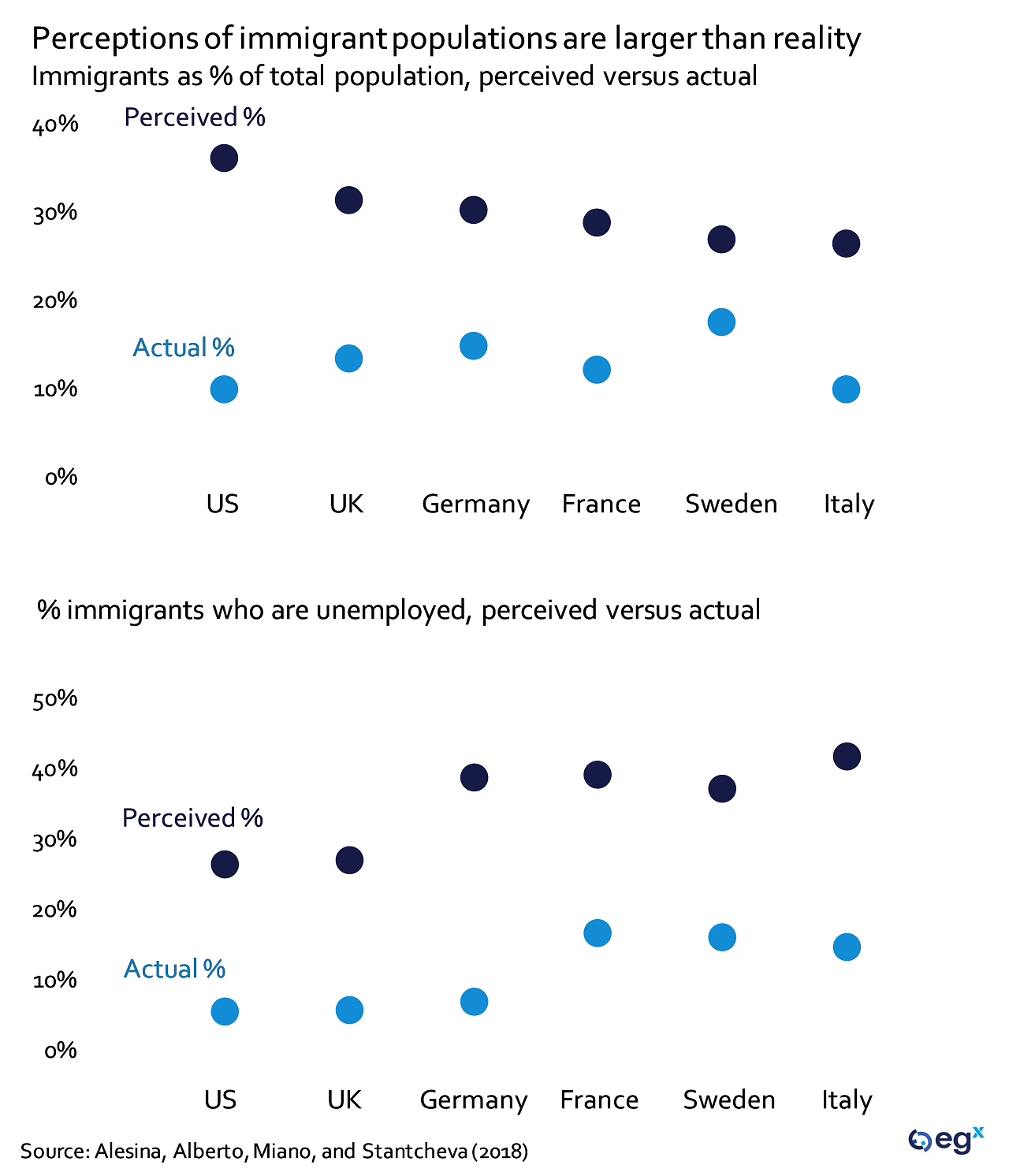The changing face of America's workforce
Since taking office, President Donald Trump has made immigration reform one of the most important, and polarizing, issues in his administration.
Immigration to the US has risen steadily since the abolishment of nation-origin quotas with the 1965 Immigration and Nationality Act. Trump's proposed policies, which range from tightening the rules on H1-B visas to building a border wall, have focused on curbing the flow of immigrants to the United States.
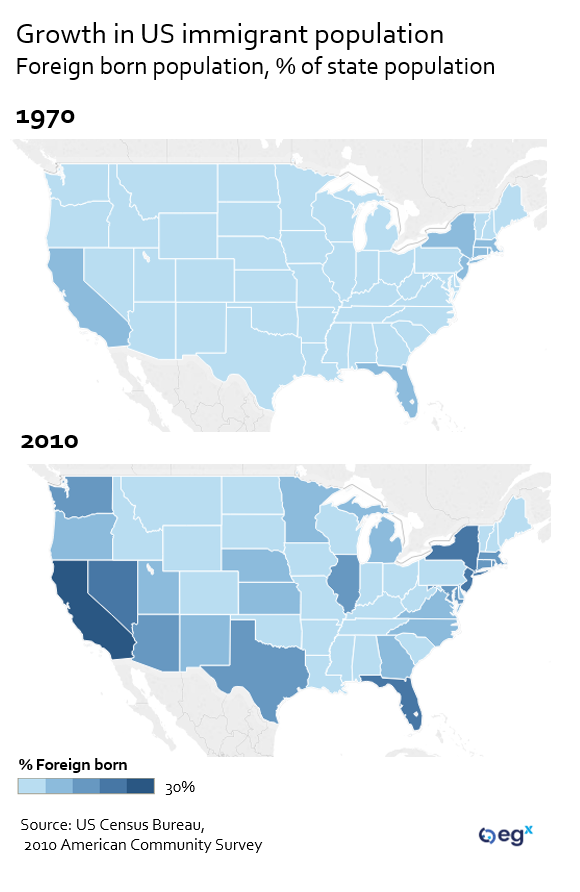
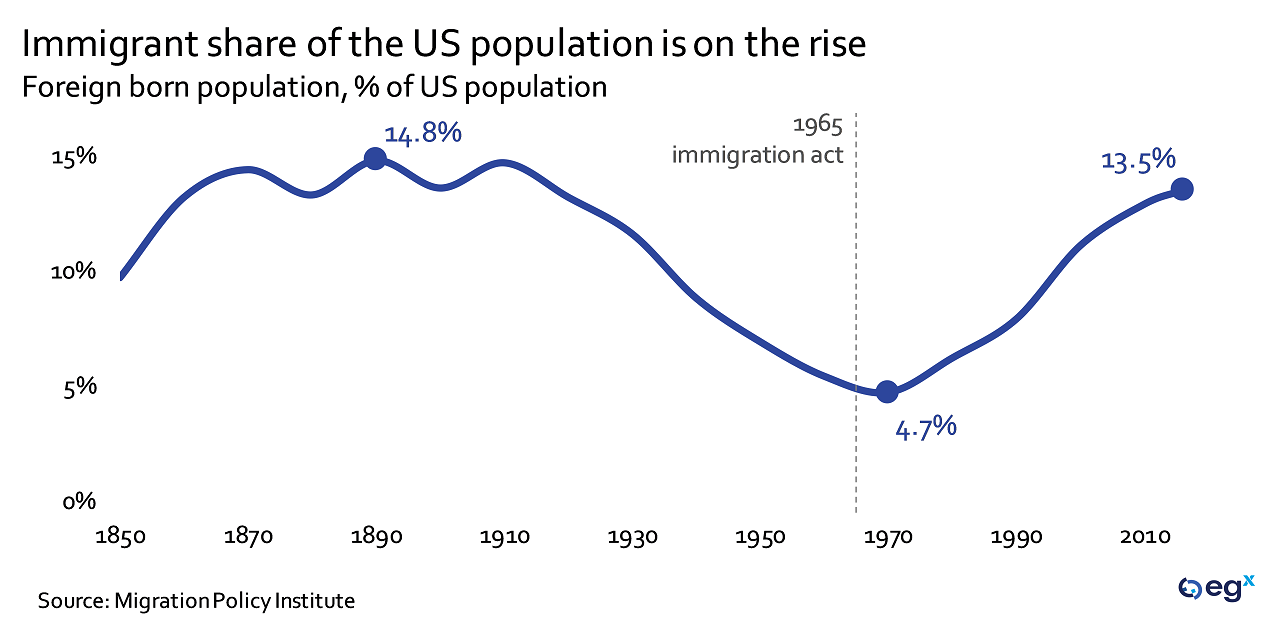
The immigrant labor force is an increasingly critical component of the American economy. Immigrant workers made up 17% of the total US workforce in 2014, with a high concentration in industries such as agriculture and construction. This dependency on immigrant labor is expected to increase as the baby boomers continue to retire and the US population ages rapidly.

Immigrants also play a critical role in filling highly skilled technical jobs through the pipeline of the US higher education system. US universities are increasingly reliant on international students to sustain the quality of their graduate programs, particularly in the STEM fields. Many of these graduate students are likely to stay in the US following their degrees and help to meet the hiring demands of US firms.
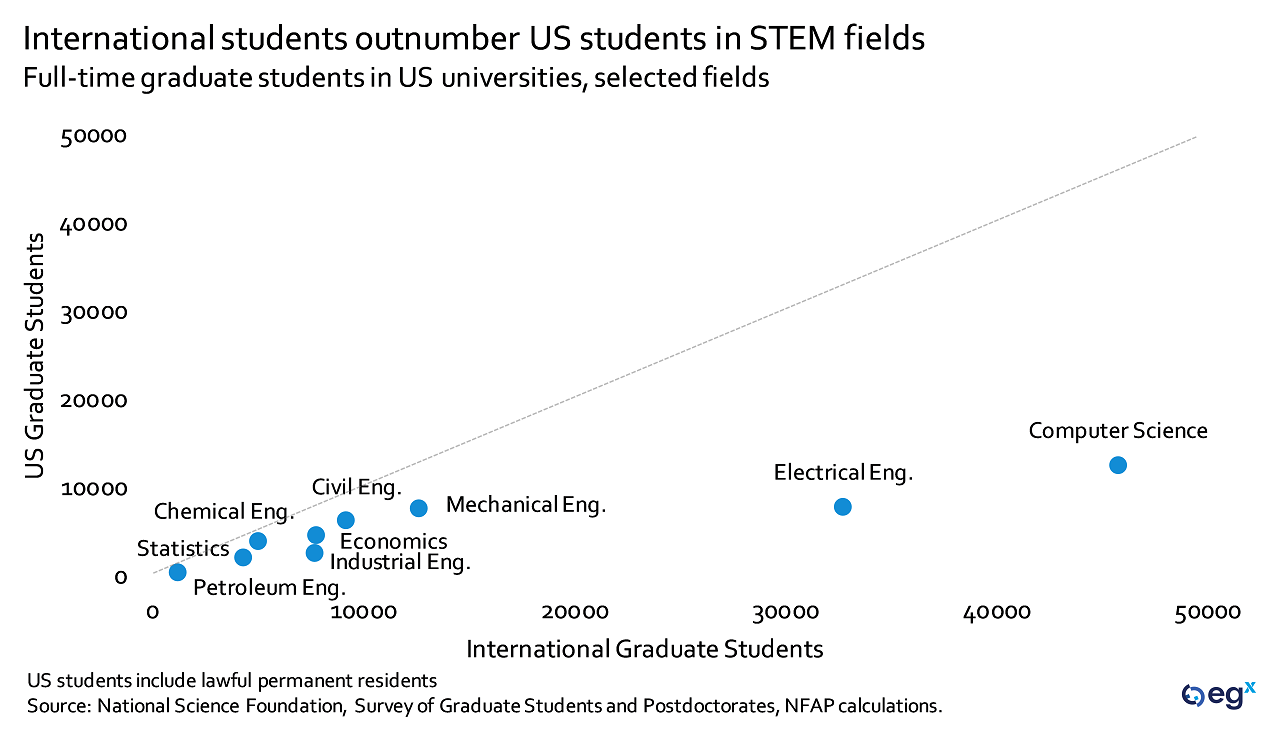 Global migration flows and trends
Global migration flows and trends
On a global scale, migratory flows are shaped by global patterns of political stability and economic growth. In recent decades, the Gulf countries' demand for low-skilled, manual labor has driven a massive outflow of migrants from South Asia. As a result, the share of migrants living in the Middle East has more than doubled since 2000.
Overall, the US remains the largest destination for international migrants. Immigration to the US has been shaped by two major trends in recent years: Migrants from Central America fleeing political instability, and an increasing number of people from East and South Asia drawn by economic opportunity.
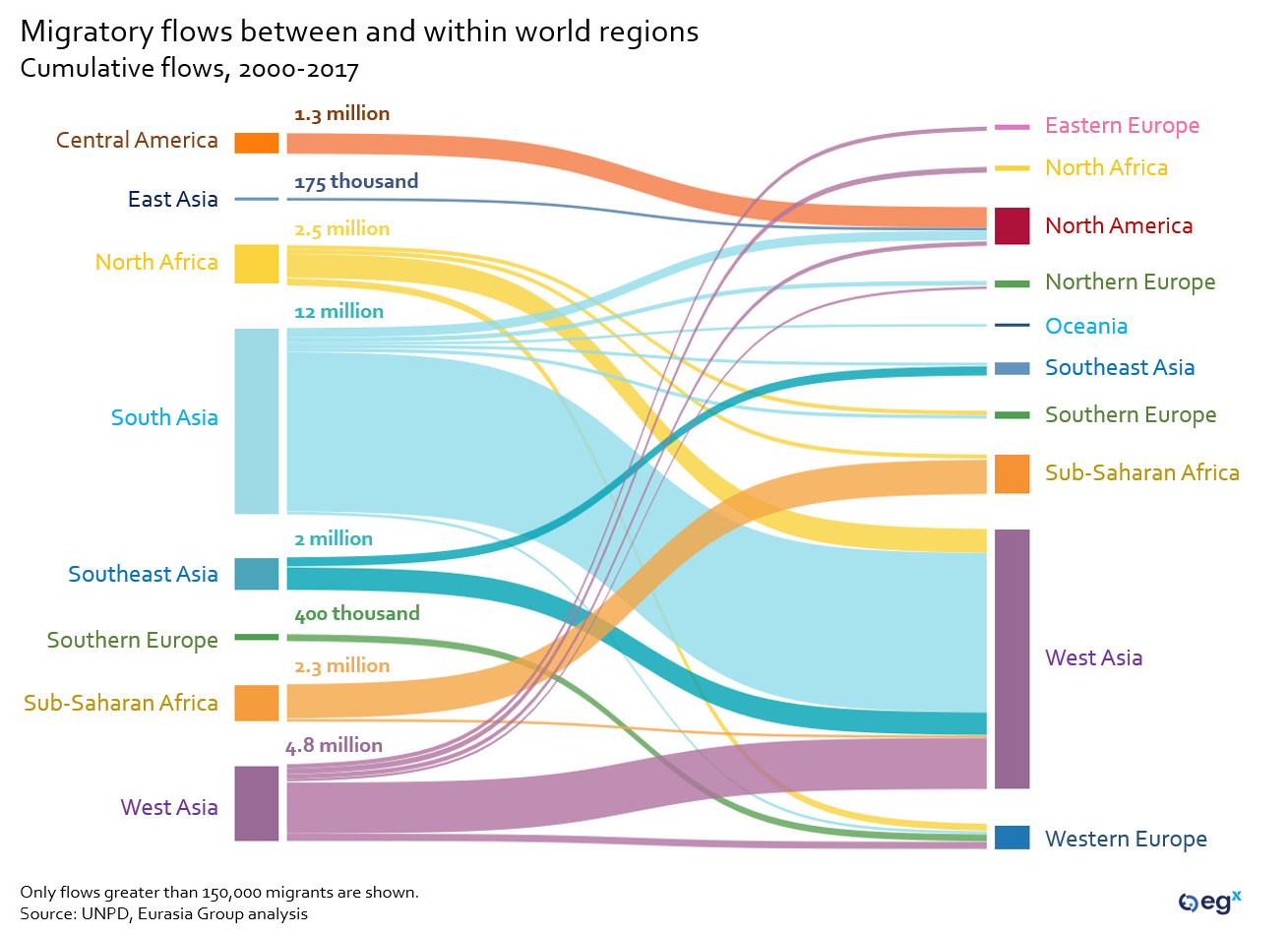
Migration can have a profound impact on both the receiving and sending countries. Countries with low levels of political stability can suffer from the impact of human capital flight, or 'brain drain,' defined as the outward migration of highly skilled and educated individuals. As a result, relatively less-stable countries tend to be more reliant on remittance flows, or money sent by expatriate workers back to their home country.
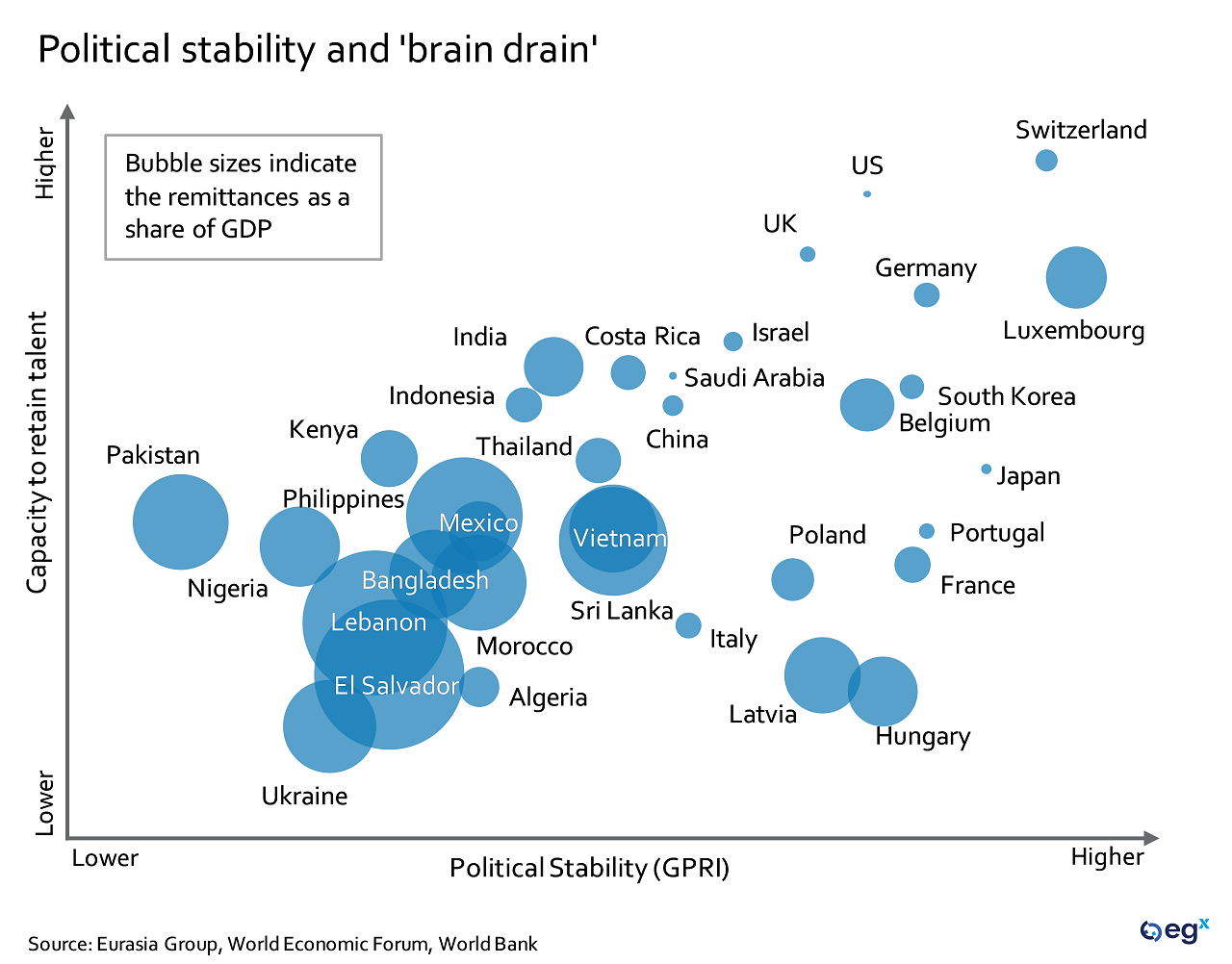
While immigration may provide economic benefits for the host country, it can also lead to political and societal backlash. Perceptions of immigration in the west tend to exaggerate both the number of migrants and their dependence on government aid. A wave of anti-immigration sentiment has swept North America and Europe, fueling a return to more nativist politics.
